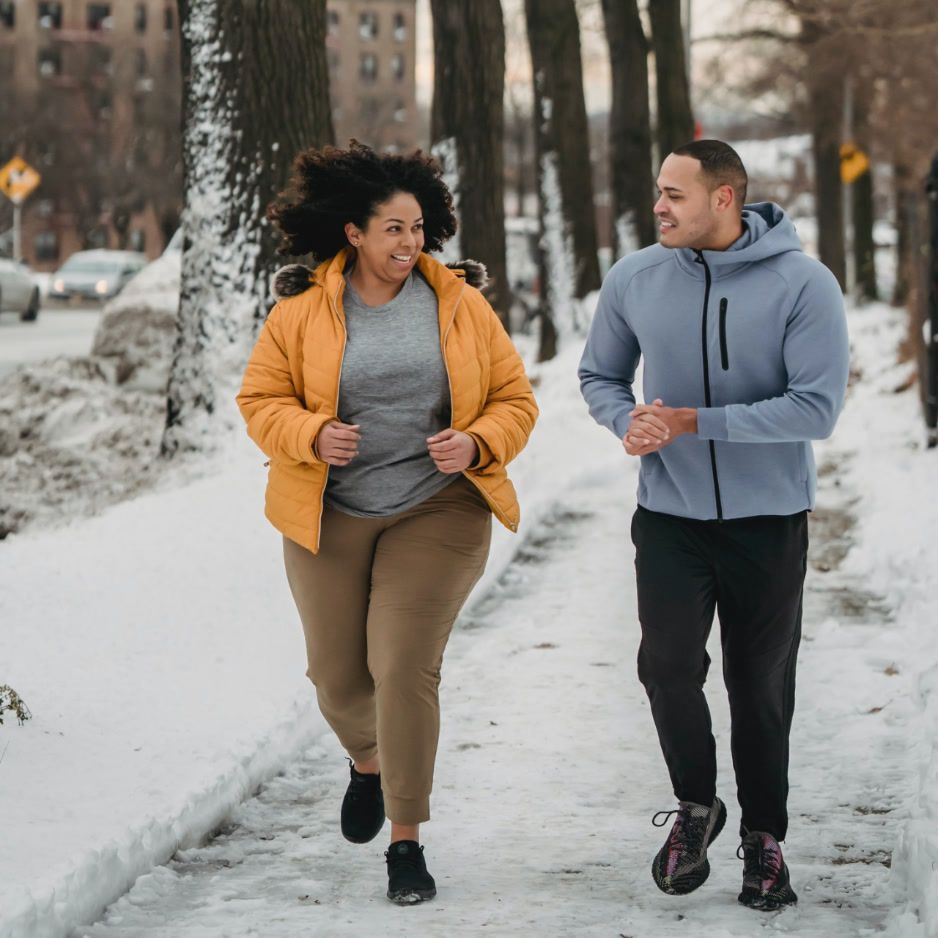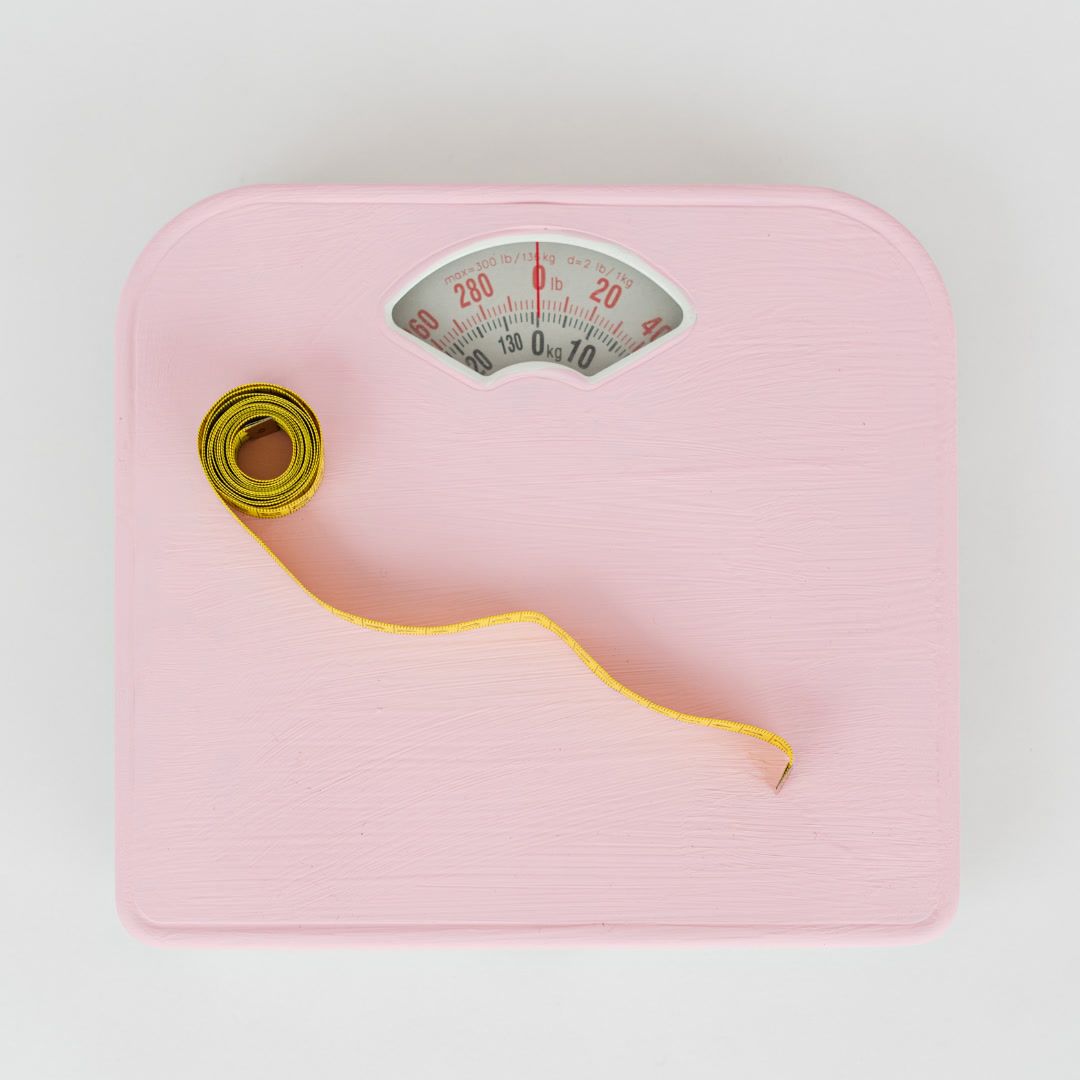What Is Blood Flow Restriction Training?
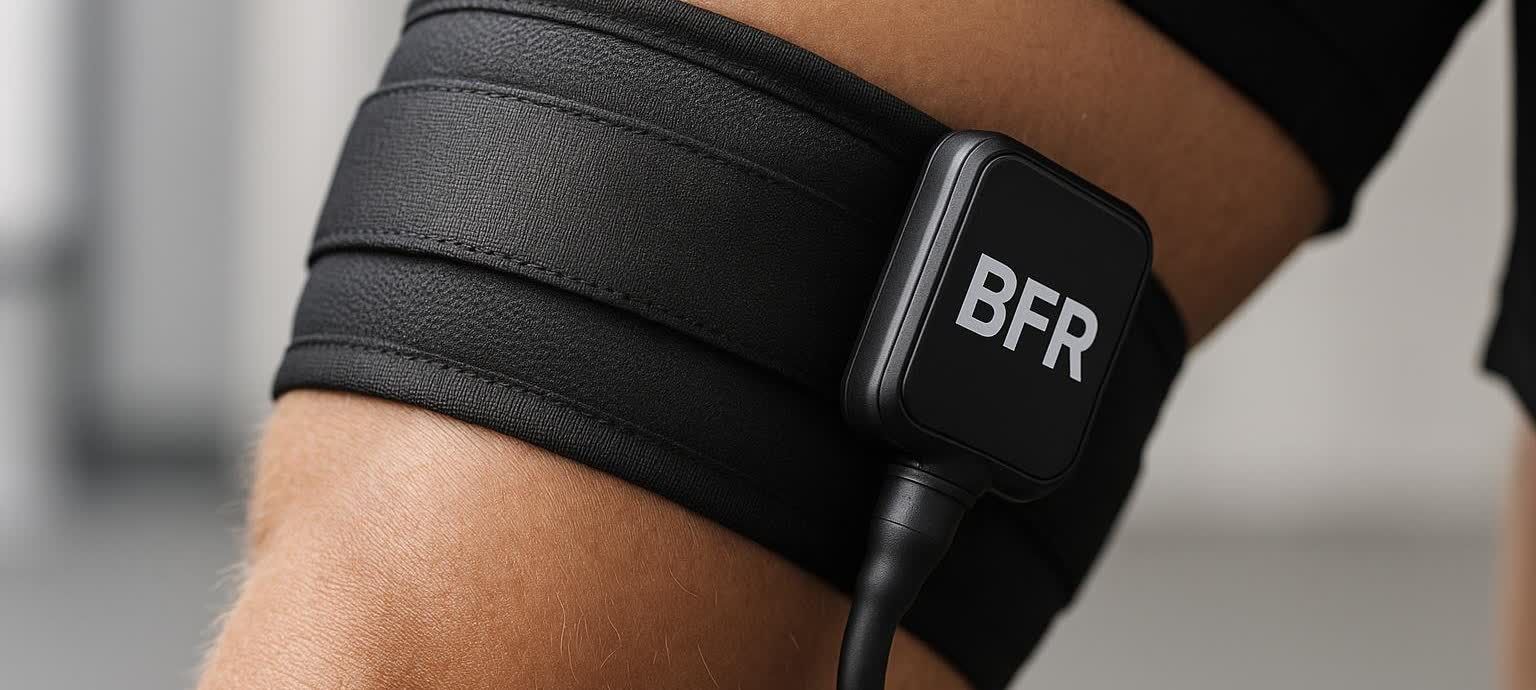
What Is Blood Flow Restriction Training? Complete Guide
Primary keyword: what is blood flow restriction training
Blood flow restriction (BFR) training is a science-based technique that uses a specialized cuff or elastic band to partially limit blood flow in a limb. When paired with very light loads, this controlled restriction activates the same muscle-building pathways normally triggered by heavy lifting—without the joint stress.
This guide covers how BFR works, evidence-backed benefits, safety considerations, and step-by-step protocols for strength, endurance, and rehabilitation goals.
Table of Contents
- How BFR Training Works
- How Does BFR Build Muscle With Light Weights?
- Benefits at a Glance
- Is BFR Safe? Contraindications and Side Effects
- Choosing the Right Cuff — Size, Width, and Tech
- Step-by-Step Protocols
- Evidence Snapshot: BFR for Post-Surgical Recovery
- FAQs
- Next Steps and BodySpec Resources
How BFR Training Works
Blood flow restriction training involves placing a cuff or band just below the gluteal fold (uppermost part of the thigh) or between the shoulder and biceps, then performing low-load exercises (20–40 % of your 1-rep max) for high reps.
By trapping blood in the muscle, BFR creates a hypoxic, metabolite-rich environment that triggers growth pathways normally reserved for high-intensity lifting, according to the Cleveland Clinic.
Analogy: Think of BFR as putting your muscles in a “traffic jam.” Oxygen delivery slows, waste products pile up, and the muscle’s emergency response team—fast-twitch fibers, growth hormones, and mTOR signaling—races in to clear the scene and rebuild stronger tissue.
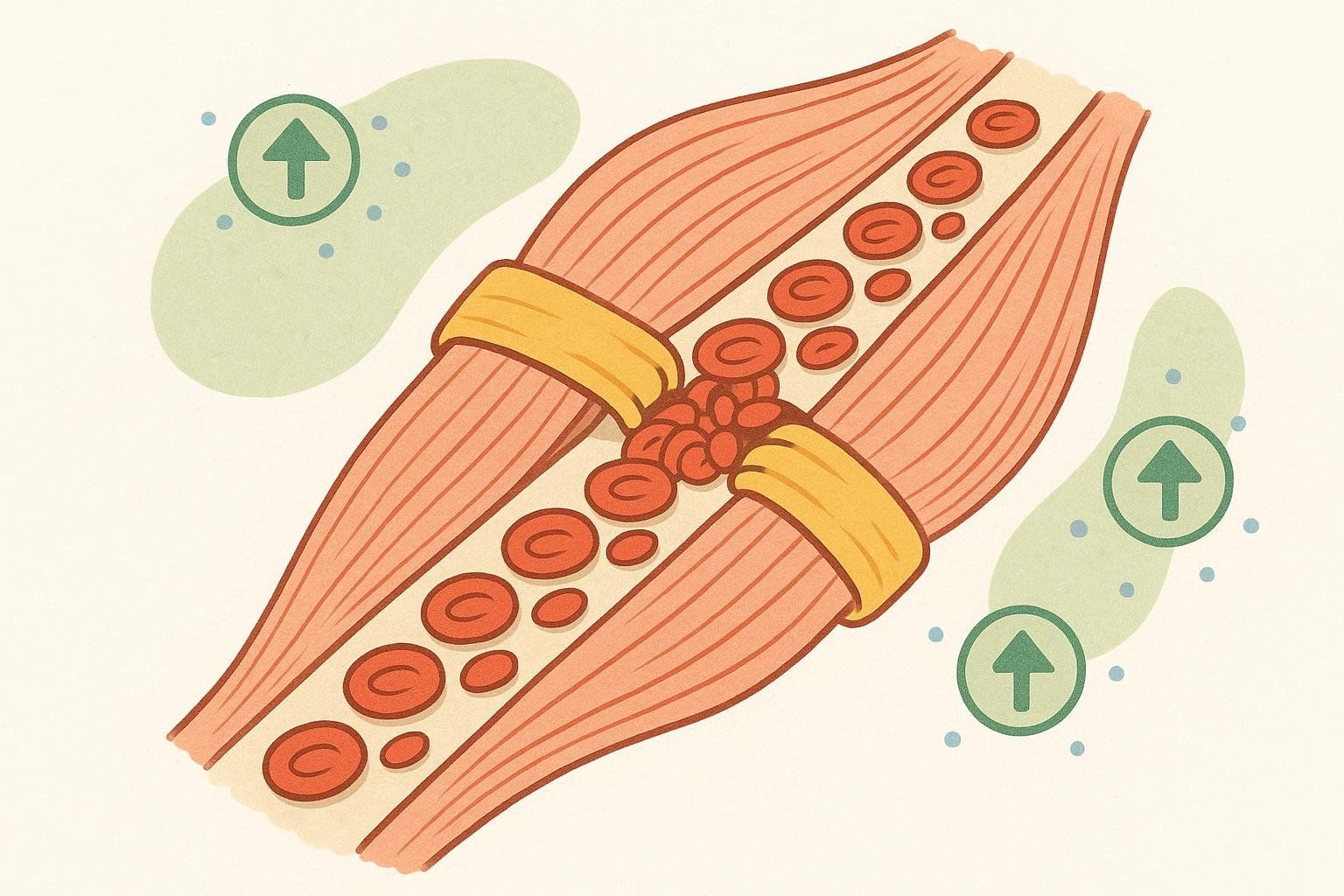
If you’re completely new to resistance training, review fundamental movement patterns and load selection in our Strength Training for Beginners guide before layering on BFR.
How Does BFR Build Muscle With Light Weights?
A 2022 review on BFR therapy identifies two synergistic mechanisms:
- Metabolic Stress
- Low oxygen (hypoxia) increases lactate and hydrogen-ion accumulation.
- These metabolites stimulate growth hormone (GH) and IGF-1 release.
- Fast-Twitch Fiber Recruitment
- Under normal loads, type II (fast) fibers are recruited last.
- Hypoxia forces early recruitment—even at 20–40 % 1RM—mimicking heavy lifting.
Together, the cascade activates mTORC1 (the muscle-protein-synthesis switch) and suppresses myostatin (a growth brake), as detailed in a 2022 narrative review, ultimately driving hypertrophy.
Benefits at a Glance
| Goal | Traditional Approach | BFR-Enabled Alternative |
|---|---|---|
| Hypertrophy & strength | 70–85 % 1RM, heavy loads | 20–40 % 1RM, joint-friendly |
| Post-surgery rehab | Long immobilization ➞ atrophy | Low-load BFR preserves muscle |
| Seniors with arthritis | Heavy weights = painful | Light-load BFR = less stress |
| Endurance boost | High-volume cardio | Improves VO₂ max with light exercise |
| Bone health | High-impact exercises | BFR may stimulate bone formation* |
*Preliminary data—more research needed.
Is BFR Safe? Contraindications and Side Effects
BFR is considered safe for most healthy individuals when pressures are individualized and sessions are brief. In clinical studies, adverse events are rare (<0.008 %).
Common, temporary side effects – tingling, mild bruising, delayed-onset muscle soreness.
Absolute contraindications
- Active DVT or clotting disorders
- Uncontrolled hypertension (> 180/110 mmHg)
- Sickle cell anemia
- Active infection in the limb
- Pregnancy
- Malignant tumors in the limb
When in doubt, consult a clinician certified in BFR.
Reminder: Any modality that restricts blood flow warrants respect. If you experience sharp pain, numbness, or unusual swelling, remove the cuff immediately and seek medical advice.
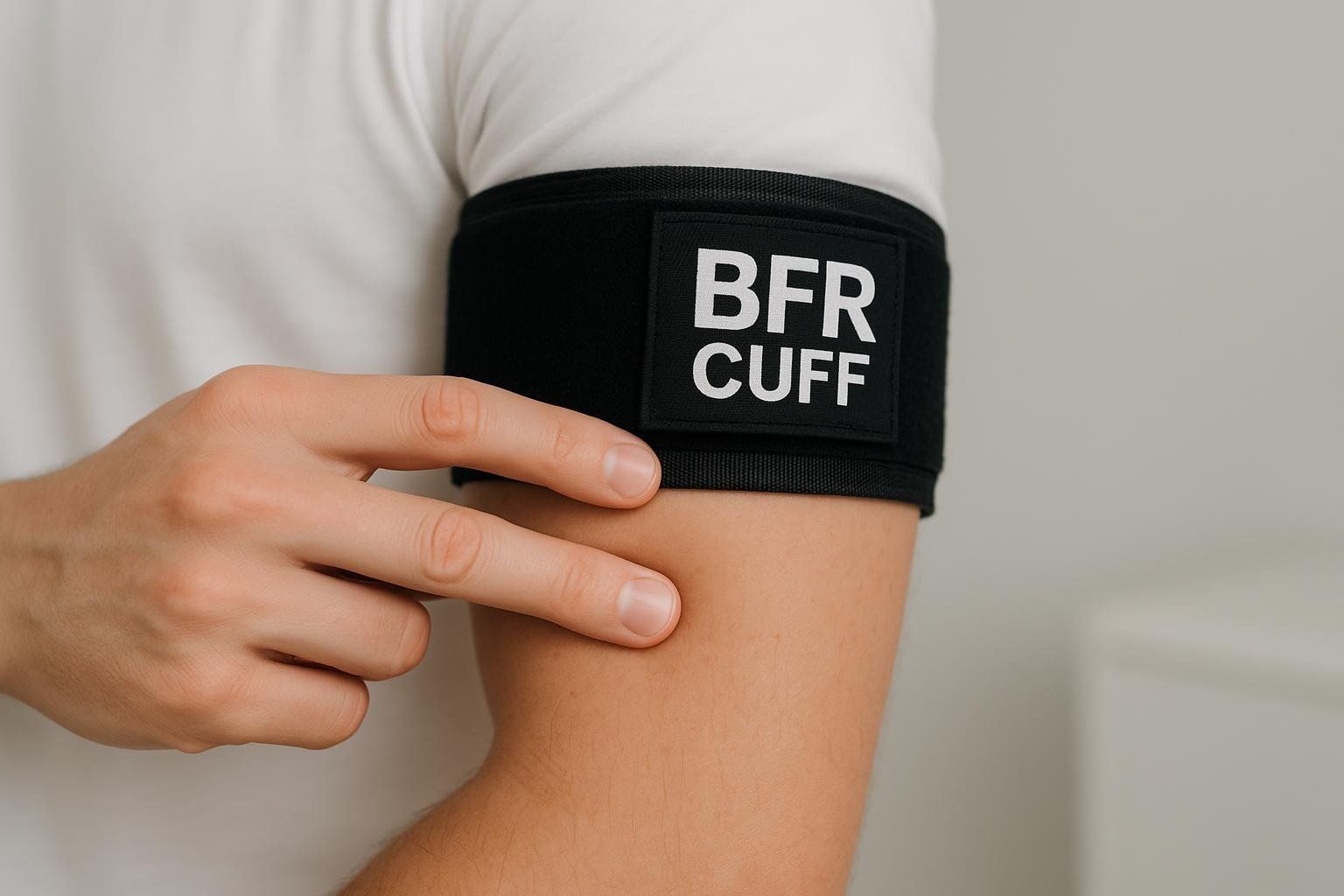
Choosing the Right Cuff — Size, Width, and Tech
| Variable | Why It Matters | Practical Tip |
|---|---|---|
| Width | Wider cuffs require less pressure to reach the same occlusion level; overly wide cuffs can limit range of motion. | 5–9 cm for arms; 10–14 cm for legs |
| Material | Elastic bands are affordable but imprecise; pneumatic cuffs allow exact pressures plus auto-inflation. | Beginners: start with purpose-built pneumatic systems if budget allows |
| Limb Occlusion Pressure (LOP) | Percentage of arterial flow blocked, individualized to you. | Measure at rest; use 40–50 % LOP (arms), 60–80 % LOP (legs) |
Step-by-Step Protocols
The clinical standard is to have a professional measure your LOP with a Doppler device before you begin.
BFR With Resistance Exercise
- Determine your LOP (see note above).
- Inflate to 40–50 % LOP (arms) or 60–80 % LOP (legs).
- Select load ≈ 20–40 % 1RM.
- Perform 30-15-15-15 reps (30 s rest, cuff stays inflated).
- Deflate; rest 2–3 min before the next exercise.
Repeat 2–3 times per muscle group, 2–3 × week.
BFR With Aerobic Exercise
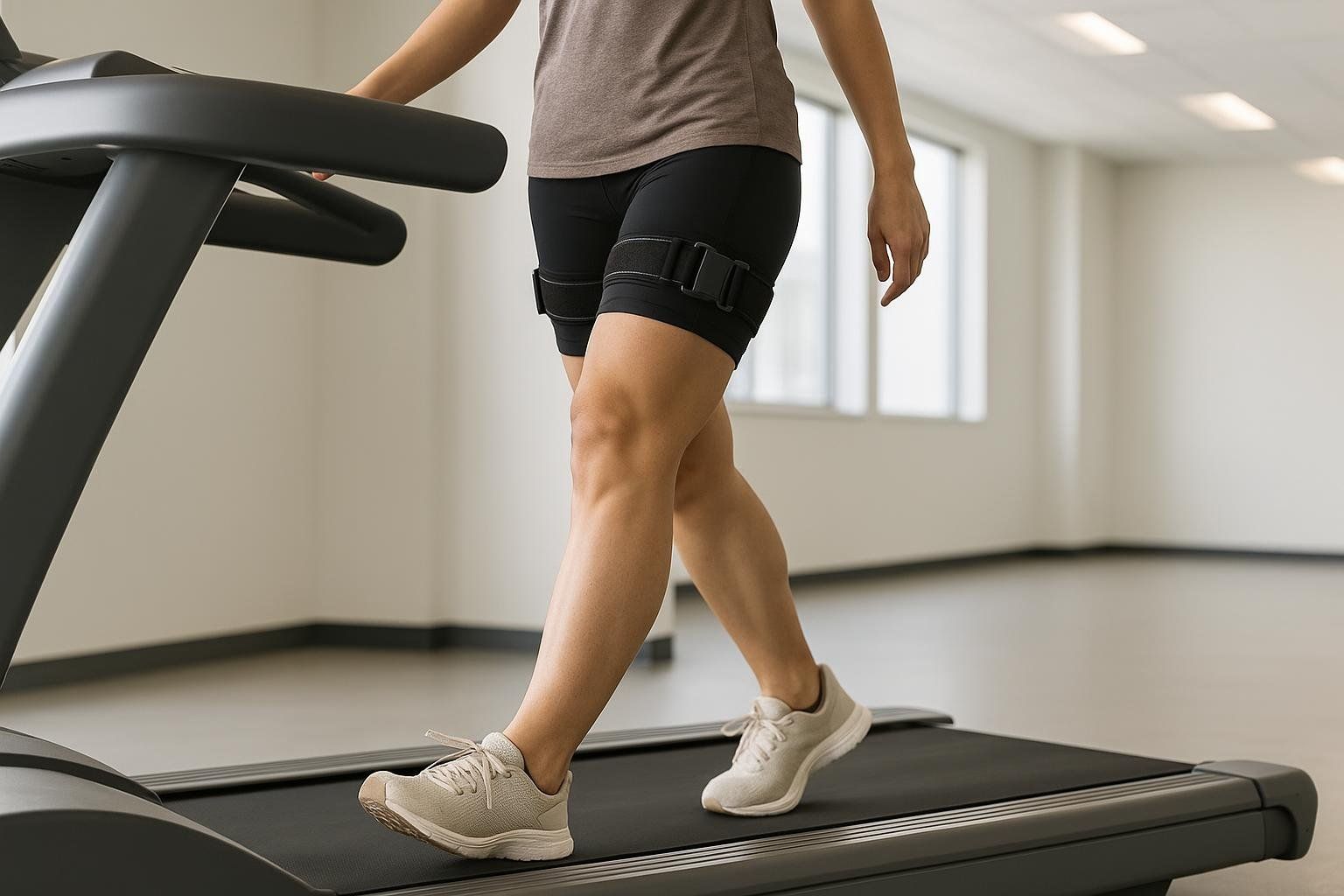
- Inflate cuffs on legs to 60 % LOP.
- Walk on a treadmill for 10–20 minutes at 2–3 mph, 0–2 % grade.
- Optionally substitute cycling or step-ups at similarly low workloads.
Passive and Post-Surgery Applications
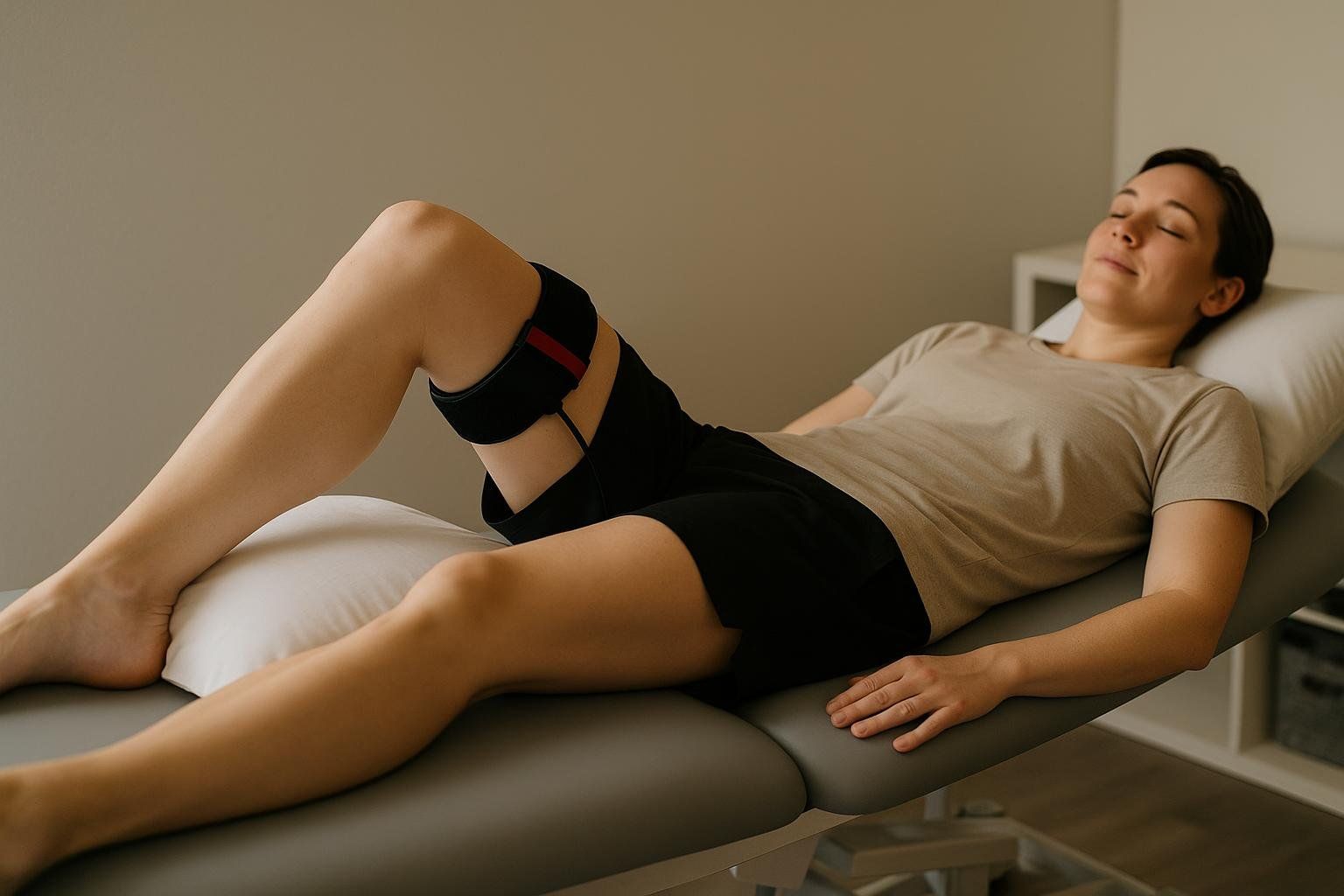
- Inflate to 70–100 % LOP while at rest—no exercise.
- Maintain cuff for 5 minutes, then deflate for 3 minutes.
- Repeat for 4 cycles per session, 1–2 sessions per day.
Always follow surgeon or physical-therapist guidance.
Evidence Snapshot: BFR for Post-Surgical Recovery
A 2022 systematic review of BFR after knee surgeries found that post-operative BFR increased quadriceps cross-sectional area by about 8 % while standard rehab groups lost roughly 2 %. Patients also regained strength and functional milestones—such as the Timed Up & Go test—significantly faster.
Takeaway: BFR can deliver a meaningful strength stimulus before heavy loading is safe, accelerating early recovery.

FAQs
Is BFR just for athletes?
No. Seniors, sedentary adults, and post-op patients can all benefit because it delivers stimulus with minimal joint stress.
How tight should the cuff feel?
It should feel snug—about a 7/10 on a tightness scale where 10 = pain. You should not feel numbness or throbbing.
Can I do BFR every day?
Treat BFR like heavy lifting: muscles need recovery. Two to four sessions per week per limb are plenty.
Does BFR cause blood clots?
Current research shows no increased clot risk when used correctly; some studies even found improved fibrinolytic activity.
How soon after surgery can I start?
Some protocols begin passive BFR within 48 hours post-op, but clearance from your surgeon is mandatory.
For more safety guidance, see our detailed Injury Prevention Strategies.
Next Steps and BodySpec Resources
- DEXA Body Composition Scan – understand your baseline muscle mass before starting BFR.
- Monitor progress with periodic re-scans—find a BodySpec location near you.
- Optimize recovery by following guidance on nutrition for pre- and post-surgery.
Disclaimer: BFR is not a substitute for medical care. Consult qualified professionals before starting.
